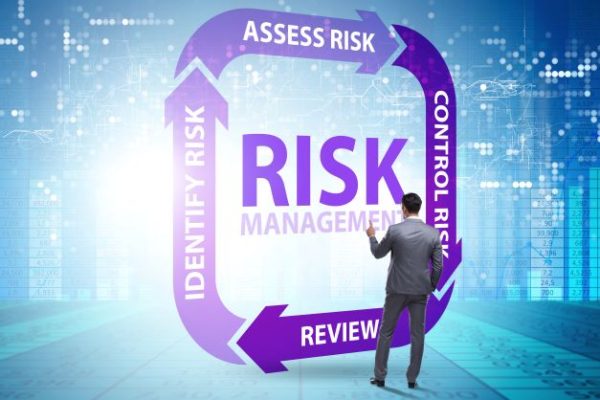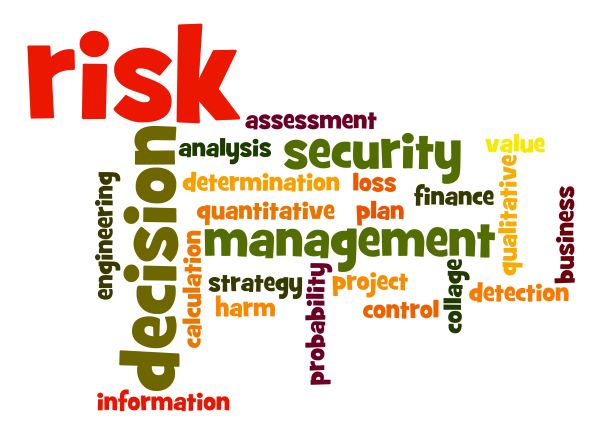Quantitative risk management has become an integral part of the financial industry and is becoming more popular in other sectors.
The purpose of quantitative finance is to provide a framework for decision-making, which includes many disciplines like statistics, probability theory, econometrics, computer science, and engineering. Quantitative finance offers a mathematical foundation for understanding how prices change in financial markets.
It is used to measure risk, design financial instruments, optimize portfolios, and hedge risks. Quantitative risk management is the process of identifying, measuring, managing and hedging risks.
Risk management is the practice of assessing risk and taking steps to minimize or mitigate loss. Risk can be defined as the potential for an event to occur that will hurt an organization. Aggregate risk enhances risk managers aggregated portfolio wide risks.
There are many different types of risks that organizations face, including financial risk, operational risk, compliance risk, strategic risk, and reputational risk. Financial risks include losing money on investments, the risk of not getting paid for goods or services delivered, and the risk of not being able to meet financial obligations.
Operational risks include the risk of a disruption in business operations, the risk of data loss or theft, and the risk of human error. Compliance risks include violating laws or regulations, the risk of being fined or sued, and the risk of losing customer trust.
Strategic risks include the risk of missing out on opportunities, the risk of making poor decisions, and the risk of not being able to execute a plan. Reputational risks include the risk of damage to an organization’s brand or image, the risk of losing customer trust, and the risk of losing employees.
It provides a logical and practical approach for understanding and applying quantitative risk management theory. Quantitative Risk Management topics give you the skills needed for solving real-world problems. Quantitative risk management describes the most recent developments within the industry covering market credit and operational risk modelling techniques.
Industry standards are firmly established and explored key ideas, including loss distribution measures, risk allocation, risk aggregation, and attribution principles. Provides a quantitative risk manager’s quiver that risk professionals use.
The blog post will outline the concepts, techniques, and tools for quantitative risk management.
What is Quantitative Risk Management?
Quantitative Risk Management for Project Management involves translating a risk impact into numbers. These numerical statistics are often employed when determining the time and costs of the project.
Advanced risk management concepts and statistical and mathematical tools measure risks. Banking and insurance supervisors employ these techniques to set minimum capital requirements for financial institutions.
The objective of quantitative risk management is to estimate the probability and potential impact of identified risks to formulate an optimal risk management strategy. Operational risk modelling is used to identify and measure operational risk, which is the loss resulting from inadequate or failed internal processes, people, and systems.
Quantitative risk measurement is the process of assigning risk measures of a numerical value to risk. Organizations use it to decide which risks to take on and which to avoid. There are many different methods for quantitative risk measurement, but they all share some standard features.
First, quantitative risk measures require data. This data can come from historical records, simulations, or both. Key risk drivers must be identified and quantified to be used in the risk measurement process. Mathematical tools facilitate quantitative finance, practical and usable solutions for extreme value theory and dynamic volatility models.
Second, quantitative risk measurement requires models. These models can be complex statistical models or simple rules of thumb. The key is that the model must accurately capture the relationships between the data and the risks being measured.
Finally, quantitative risk measurement requires interpretation. The results of the risk measurement process must be communicated to decision-makers in a clear and concise way. They must then be used to make informed decisions about which risks to take on and avoid.
Quantitative risk measurement is a powerful tool to help organizations decide which risks to take on. However, it should not be used in isolation. It must be combined with other risk management techniques, such as scenario planning, to get the most accurate picture of its risks.

QRM Enterprise Risk Framework
The QRM enterprise risk framework is based on QMS and offers diversified management solutions covering the banking and insurance sectors.
Quantitative risk management concepts are used to manage market, credit, and operational risks. The framework is scalable and flexible, allowing organizations to adapt it to their specific needs.
The QRM enterprise risk framework has been designed to meet the requirements of Basel III and Solvency II and is compliant with international standards such as ISO 31000.
The QRM enterprise risk framework is based on the principles of quantitative risk management (QRM), which uses mathematical and statistical models to manage risks. It offers a comprehensive and scalable solution that can be adapted to the specific needs of organizations in the banking and insurance sectors.
The QRM enterprise risk framework provides a structured approach to managing all types of risks, from market risk, credit risk, and operational risks, to compliance risks. It uses quantitative risk management concepts and methods, allowing organizations to manage risk in a more proactive and informed manner.
Market risk, for example, can be measured and managed through the use of Value at Risk (VaR) models. Credit risk can be mitigated through credit scoring techniques, while operational risk can be controlled by implementing robust internal controls. Compliance risks can be managed by developing policies and procedures that are designed to prevent and detect violations.
Counterparty credit risk is the risk of loss resulting from a counterparty’s failure to fulfil its obligations under a contract. In the context of derivatives contracts, counterparty credit risk is often referred to as counterparty risk.
Financial risk analyst is a position that requires the ability to understand and analyze complex financial data. Financial risk analysts work in various industries, including banking, insurance, investment, and accounting. They use their skills to identify risks and develop strategies to mitigate them. They can be a great addition to the risk management department.

Quantitative Risk Management Concepts
Quantitative risk management is a process that has been in place for decades. It was a new way of looking at the financial markets that allowed traders to make better decisions, leading to more accurate forecasts and predictions, ultimately leading to more profit. With all of this information being processed so quickly, quantitative risk management became even more valuable by helping traders see potential risks and opportunities in the market.
There are several quantitative risk management concepts to understand when making informed decisions about the market. One of the most important is VaR, or Value at Risk. VaR is a calculation that estimates how much money could be lost on a particular security or portfolio over a given time. It is important to note that VaR does not predict the actual loss that will occur, but rather it is a statistical tool that can help assess the potential for loss.
Another concept in quantitative risk management concepts is diversification. Diversification is a risk-management technique that aims to reduce the overall risk of a portfolio by investing in various securities. By spreading the risk around, it is less likely that a significant loss will be incurred on any one investment.
These are just a few important quantitative risk management concepts that traders need to understand. By being aware of these concepts and making informed decisions, traders can minimize their risk and maximize their profits.
Quantitative risk management concepts other examples:
- Probability: the likelihood that an event will occur
- Impact: the severity of the consequences of a risk event occurring.
- Risk tolerance: the amount of risk an organization is willing to accept to achieve its objectives
- Risk assessment: the process of identifying, analyzing, and assessing risks.
- Risk management: the process of identifying, assessing, and responding to risks in a way that seeks to minimize their impact on an organization.
- Risk mitigation: the process of reducing the likelihood or severity of a risk event occurring.
- Risk transfer: the process of shifting the risk to another party.
- Incident response plan: a plan that outlines how an organization will respond to a risk event.
- Business continuity plan: a plan that outlines how an organization will continue its operations in a major disruption.
- Crisis management plan: a plan that outlines how an organization will manage a crisis.
Quantitative Risk Management Techniques
Quantitative risk management techniques are used to calculate, measure and manage the risks associated with financial instruments and transactions. The most common approach is value at risk (VAR), which calculates the maximum loss that could be incurred over a given period with a given level of confidence. Other techniques include Monte Carlo simulation and stress testing.
Value at Risk (VAR) is the most common quantitative risk management technique. It calculates the maximum loss that could be incurred over a given period, with a given level of confidence. The VAR calculation considers the probability of each potential loss and then sums them up to provide a total loss figure.
Monte Carlo simulation is another quantitative risk management technique. It involves using computer models to generate random outcomes and then analyzing the results to see what could happen in different scenarios.
Stress testing is another quantitative risk management technique. It involves putting a financial instrument or transaction through a series of hypothetical stressful situations to see how it would cope. It can help identify any potential problems that could arise in the future.
The financial risk with rigorous and detailed coverage will satisfactorily address extreme outcomes. Risk factors and risk management problems are routinely identified during the business. Identifying risk factors is a continuous and dynamic process that should take place at all levels within an organization.
Risk exposure due to financial engineering news will aggregate risk enhancement. The risks associated with financial engineering are gaining more attention in the media and policymakers. One reason for this increased attention is the tremendous growth in the use of financial engineering over the past two decades.
Financial engineering includes various techniques, such as securitization, swaps, options, and futures. They can be included in a risk manager’s training manual.
Quantitative Risk Management Tools
Quantitative risk management tools are a must for any organization looking to manage risk effectively. These tools allow organizations to quantitatively measure and analyze risk, making identifying and responding to potential threats easier.
There are various quantitative risk management tools available, each with its strengths and weaknesses. Some of the most common tools include:
- Risk maps: Risk maps are a visual way of representing risks, allowing organizations to identify and assess potential threats quickly.
- Monte Carlo simulations: Monte Carlo simulations are used to model the probability of different outcomes occurring. It can help assess the likelihood of various risks materializing.
- Decision trees: Decision trees help organizations to make better decisions by assessing the risks and benefits of different choices.
- Probability and impact matrices: Probability and impact matrices allow organizations to measure the severity of potential risks and calculate their overall risk exposure.
While each of these tools has its strengths, no single tool can manage all risks. Organizations should use a variety of tools to ensure that they can assess all potential risks.
Quantitative Risk Management is designed for people who want practical advice in solving real-world financial challenges. It provides a foundation and explores key concepts relating to loss distribution, risk management, risk aggregation, and risk allocation principles. Thorough treatment that includes proofs and theorems. The International Statistical Institute is praised for having a good overview of the latest techniques for quantitative risk assessment.
Quantitative Risk Management Covers
Quantitative Risk Management Covers are designed to protect your home or office from fire. The insurance covers the cost of repairing or rebuilding your home or office in the event of a fire.
If you are looking for protection from fire, quantitative risk management covers are a great option. The insurance will help rebuild your home or office in the event of a fire. It can be a lifesaver in the event of a disaster.
When choosing quantitative risk management covers, be sure to compare quotes from different insurers. It will help you to find the best deal on coverage. Make sure that you read the policy carefully to understand what is covered.
Some things to keep in mind when shopping for quantitative risk management cover:
-The amount of coverage you need will depend on the value of your home or office. Be sure to insure your home or office for its full value.
-The type of coverage you need will also depend on the type of property you have. If you have a home with a fireplace, you will need to purchase a policy that covers fire damage.
-Be sure to shop around and compare quotes from different insurers. It will help you get the best deal on coverage.
-Make sure that you read the policy carefully to understand what is covered.
Insurance Risk Management
Risk management is a critical part of the insurance industry. Insurance companies can create policies that protect their clients from potential losses by identifying and assessing risks. There are a variety of risk management techniques that insurers use, including loss prevention, risk assessment, and risk transfer.
The insurance industry’s primary focus and regulatory framework offer comprehensive treatment to solve real world problems. Particular emphasis is on a financial institution to measure risk measures.
Loss prevention involves taking steps to reduce the likelihood of a loss occurring. It may include installing security systems, increasing safety measures, and implementing policies and procedures that minimize risk.
Risk assessment is the process of identifying and quantifying risks. This information is used to determine the premium rates that insurance companies charge their clients. Risk transfer is a technique that insurers use to shift some or all risk to another party, such as an insurance company.
What is Quantitative Risk Analysis Technique?
Quantitative risk analysis estimates the total effects of risks on the project objectives, like costs and schedule objectives. It provides insights into the potential for the project’s success and helps develop emergency reserves.
This information can then be used to make better-informed decisions about managing the risks.
The goal of quantitative risk analysis is typically to answer one or more of the following questions:
- What is the probability of a particular risk event occurring?
- What is the impact of a particular risk event if it does occur?
- What are the total risks to the project objectives (cost, schedule)?
What is QRM in banking?
QRM stands for “Qualified Retail Mortgage.” A Qualified Retail Mortgage is a mortgage originated and held by a qualified banking institution. This type of mortgage is insured by the federal government, which guarantees that the holder will repay the loan even if the borrower defaults.
To qualify for this type of mortgage, the borrower must have a good credit history and a down payment of 20%. The interest rate on a Qualified Retail Mortgage is typically lower than the interest rate on a conventional mortgage.
A Qualified Retail Mortgage can be a good option for borrowers looking for a safe and affordable way to finance their home purchase.
Conclusion
Quantitative risk management is a critical aspect of any successful organization. By understanding and applying the concepts, techniques, and tools outlined in this blog post, you can help protect your business from potential losses while maximizing profits. We hope you found this information helpful and informative. Have you tried using quantitative risk analysis in your own business? If so, what have been the results? Let us know in the comments below.

Chris Ekai is a Risk Management expert with over 10 years of experience in the field. He has a Master’s(MSc) degree in Risk Management from University of Portsmouth and is a CPA and Finance professional. He currently works as a Content Manager at Risk Publishing, writing about Enterprise Risk Management, Business Continuity Management and Project Management.

